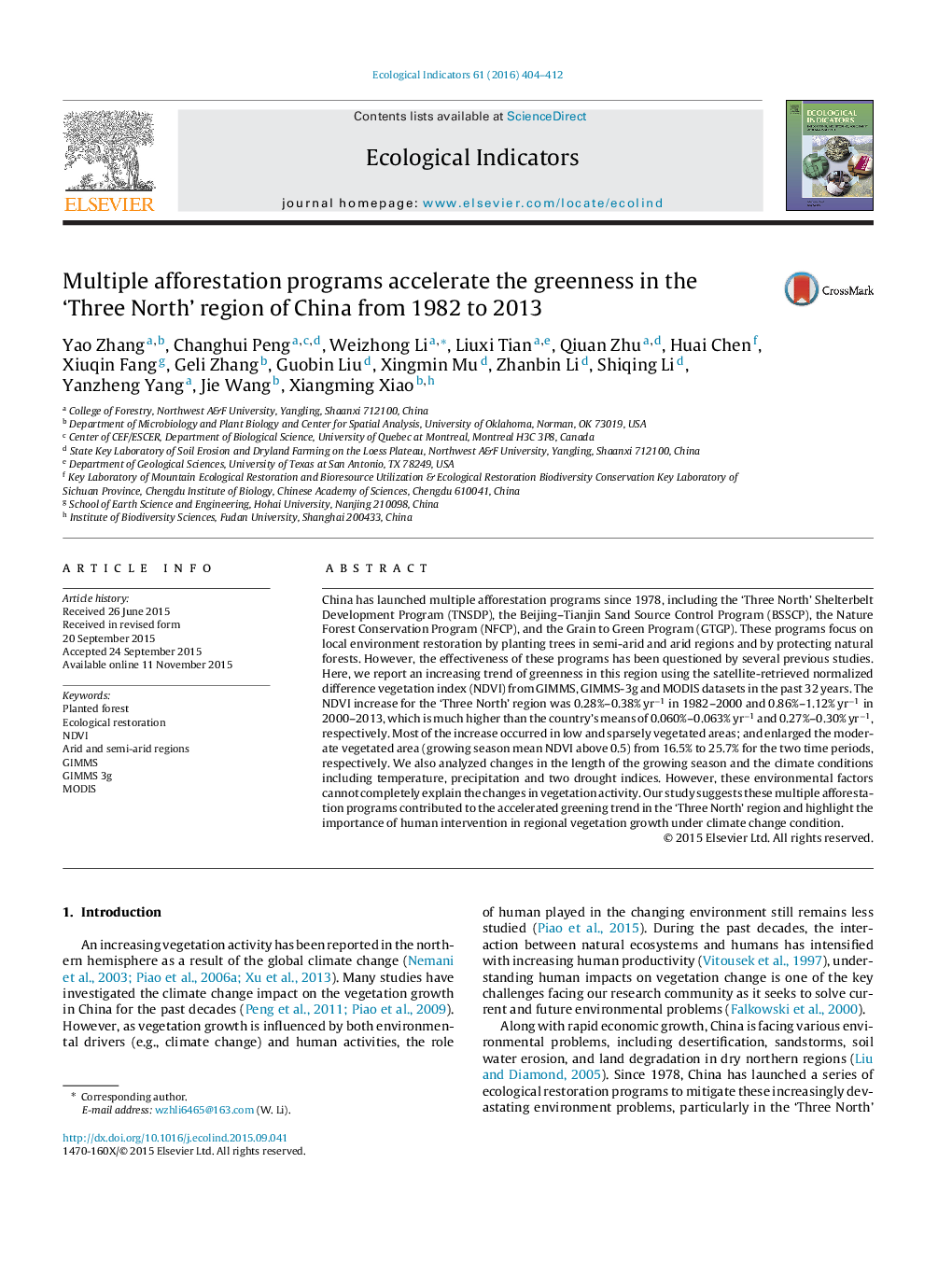| Article ID | Journal | Published Year | Pages | File Type |
|---|---|---|---|---|
| 6293619 | Ecological Indicators | 2016 | 9 Pages |
Abstract
China has launched multiple afforestation programs since 1978, including the 'Three North' Shelterbelt Development Program (TNSDP), the Beijing-Tianjin Sand Source Control Program (BSSCP), the Nature Forest Conservation Program (NFCP), and the Grain to Green Program (GTGP). These programs focus on local environment restoration by planting trees in semi-arid and arid regions and by protecting natural forests. However, the effectiveness of these programs has been questioned by several previous studies. Here, we report an increasing trend of greenness in this region using the satellite-retrieved normalized difference vegetation index (NDVI) from GIMMS, GIMMS-3g and MODIS datasets in the past 32 years. The NDVI increase for the 'Three North' region was 0.28%-0.38%Â yrâ1 in 1982-2000 and 0.86%-1.12%Â yrâ1 in 2000-2013, which is much higher than the country's means of 0.060%-0.063%Â yrâ1 and 0.27%-0.30%Â yrâ1, respectively. Most of the increase occurred in low and sparsely vegetated areas; and enlarged the moderate vegetated area (growing season mean NDVI above 0.5) from 16.5% to 25.7% for the two time periods, respectively. We also analyzed changes in the length of the growing season and the climate conditions including temperature, precipitation and two drought indices. However, these environmental factors cannot completely explain the changes in vegetation activity. Our study suggests these multiple afforestation programs contributed to the accelerated greening trend in the 'Three North' region and highlight the importance of human intervention in regional vegetation growth under climate change condition.
Related Topics
Life Sciences
Agricultural and Biological Sciences
Ecology, Evolution, Behavior and Systematics
Authors
Yao Zhang, Changhui Peng, Weizhong Li, Liuxi Tian, Qiuan Zhu, Huai Chen, Xiuqin Fang, Geli Zhang, Guobin Liu, Xingmin Mu, Zhanbin Li, Shiqing Li, Yanzheng Yang, Jie Wang, Xiangming Xiao,
